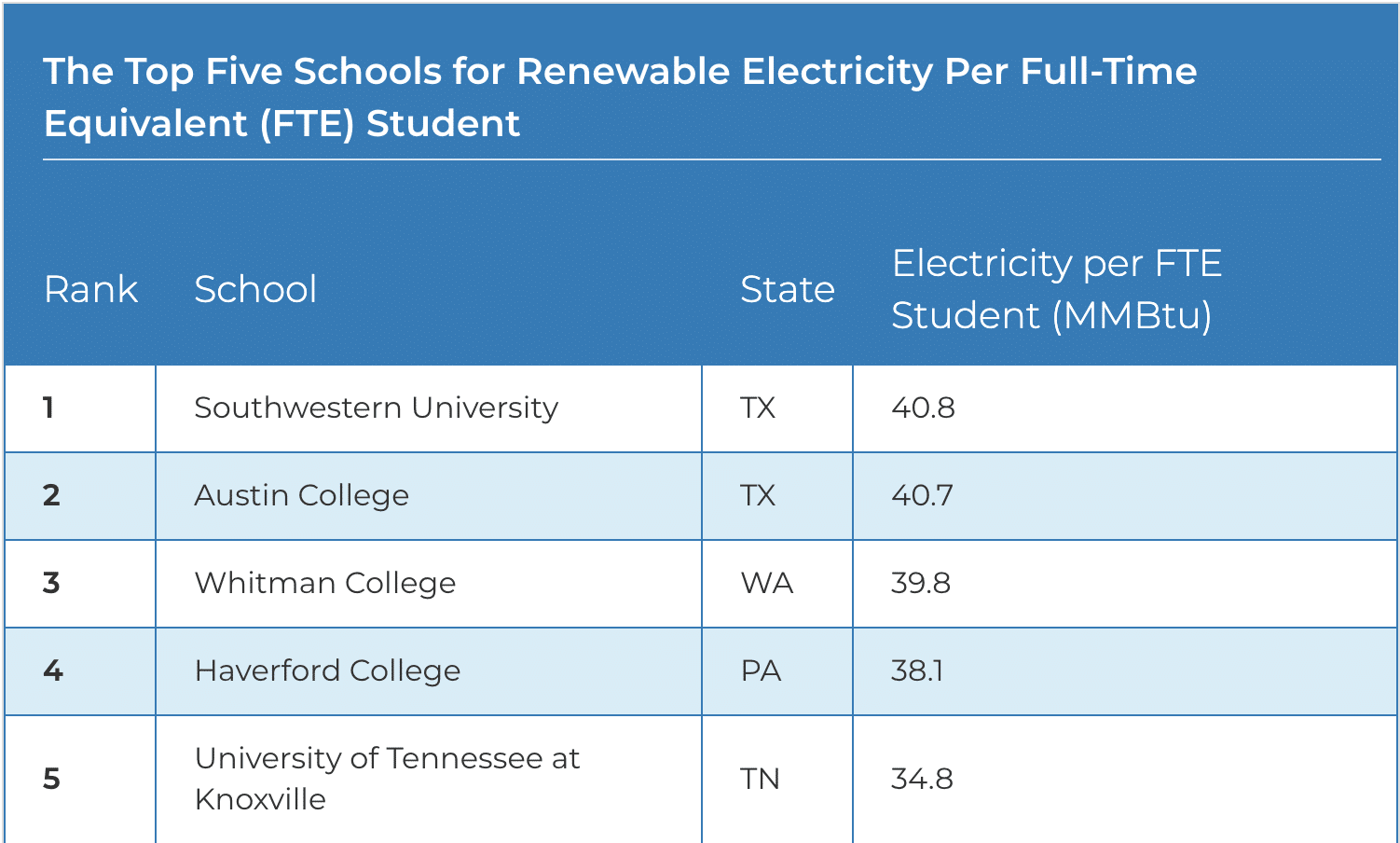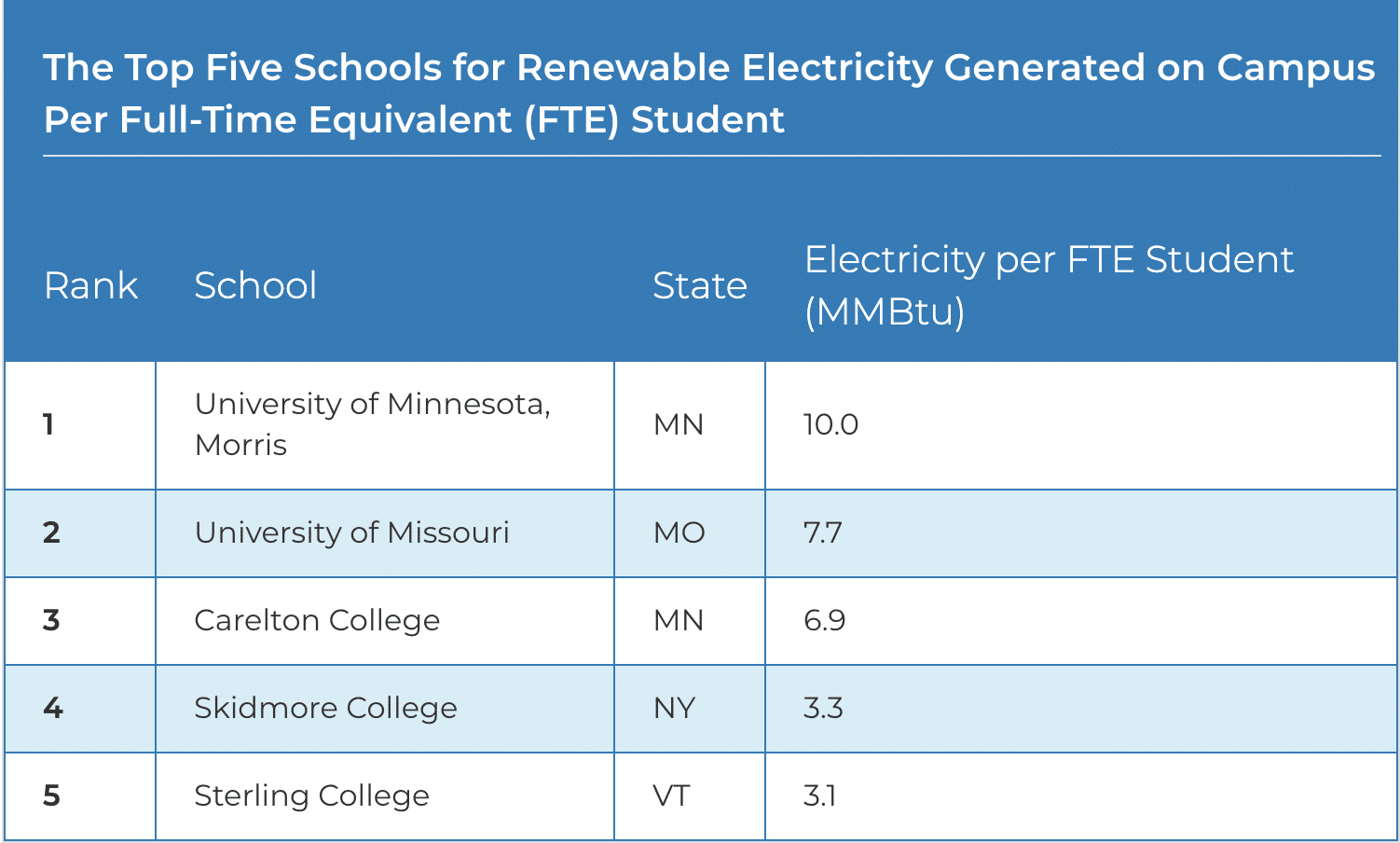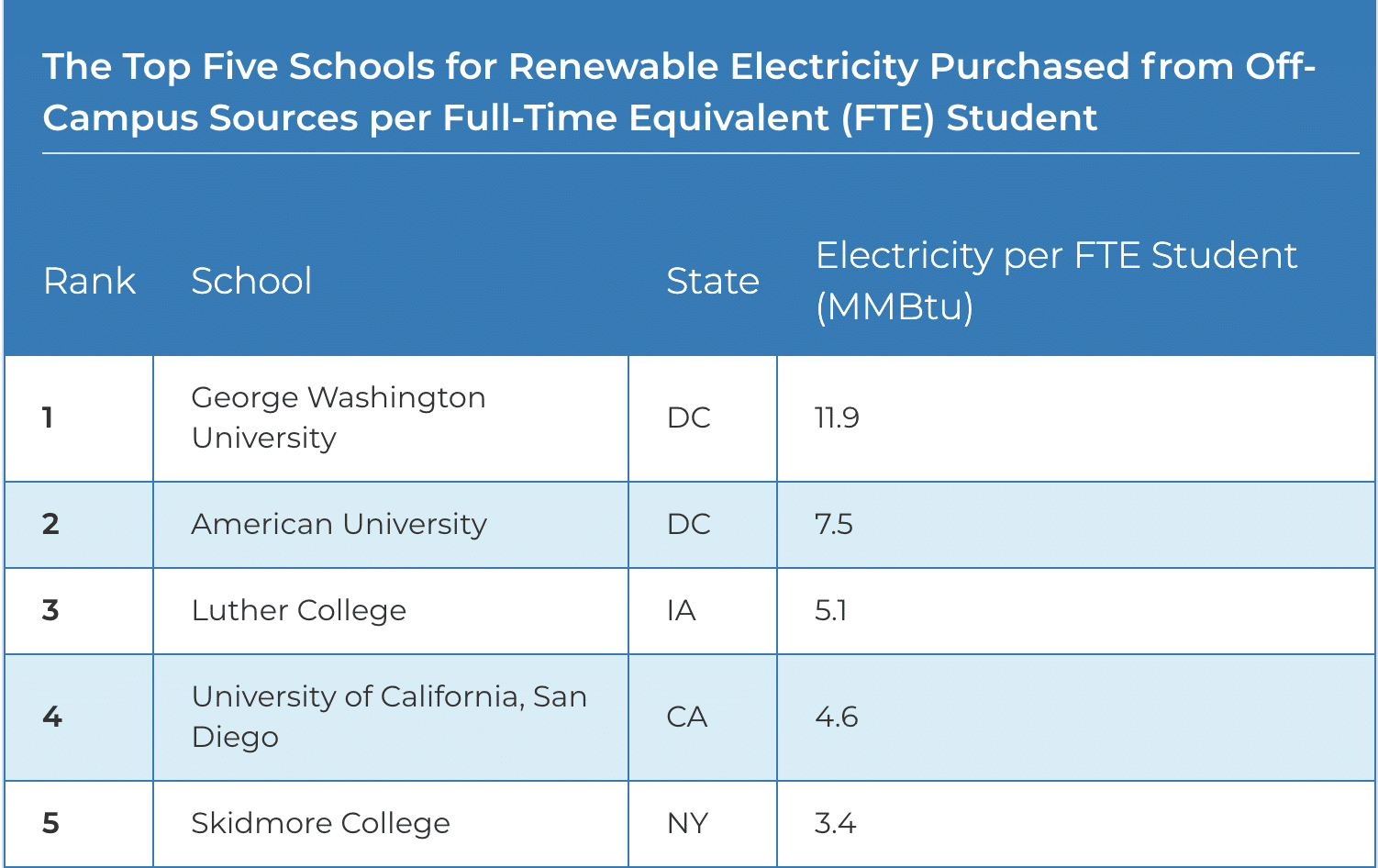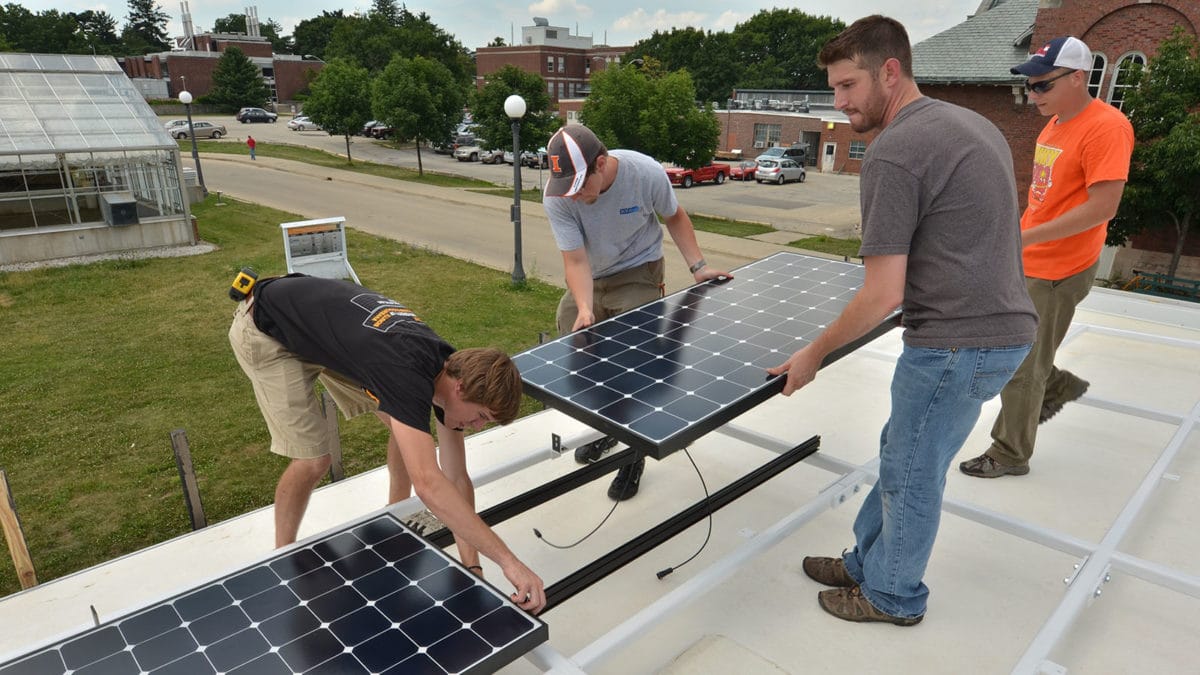There are countless variables that factor into a student’s college choice: location, program availability, strength of degree, quality of sports teams and party scene, just to name a few. But what if a student wanted to take their carbon footprint into account while choosing their dream school.
A recently published report by Environment America and the Frontier Group addresses the issue of the on-campus renewable transition by ranking America’s top colleges for renewable energy.
Before addressing the rankings themselves, it’s important to reiterate that, as quickly as states are introducing renewable energy legislation, universities are outpacing them, as the report outlines that more than 40 colleges and universities now obtain 100% or more of their electricity from renewable energy sources. Furthermore, of the 180 schools that have reported their renewable energy data to The Association for the Advancement of Sustainability in Higher Education, more than 50% of them are using some amount of renewable energy.
The ranking methodology boils down to three criteria of clarification: Renewable Electricity per Full-Time Equivalent Enrolled (FTE) student, Renewable Electricity Generated on Campus per Student and Renewable Electricity Purchased from Off-Campus Sources per Student. Remembering that universities are, by design, very large institutions, these metrics are measured in million British Thermal Units (MMBtu), so overall figures will be low when translated, as 1 MMBtu is equivalent to 0.0003 kWh.

In terms of Renewable Electricity per FTE student, Southwestern University leads the way at 40.8 MMBtu, followed closely by Austin College at 40.7. Whitman College (39.8), Haverford College (38.1) and the University of Tennessee at Knoxville (34.8) round out the top-5.
The University of Tennessee at Knoxville is the standout on this list, boasting by far the largest student population of the 5 at 28,321. On its own, the school has been recognized by the EPA as the #10 Green Power Purchaser of colleges and universities in the nation and #1 in the SEC. The school purchases over 80,020,000 KWh of renewable energy credit-qualified electricity every single year, accounting for nearly third of the university’s overall energy demand.

When it comes to renewable energy generated on-campus per FTE student, the University of Minnesota, Morris stands paramount, at 10.0 MMBtu, the next closest is the University of Missouri at 7.7 MMBtu, with Carleton College (6.9), Skidmore College (3.3) and Sterling College (3.1) rounding out the top-5.
Yet again, and quite surprisingly, to be honest the southeast is represented on this list, this time by Missouri. And once again the southeast school is the largest on the list, with Mizzou hosting a student population of 23,817. The school gets most of its renewable energy from an on-campus woody biomass boiler, supplemented by 34 kW solar capacity and 20 kW wind capacity.

The study also tracked power purchased by schools from off-site generation. In this category, George Washington University blows pas the competition at 11.9 MMBtu, with the next closest being American University at 7.5 MMBtu. The final three in the top-5 are Luther College (5.1), University of California, San Diego (4.6) and Skidmore College (3.4).
This category featured by far the most large-school representation, with George Washington (25,613), American (13,061) and UCal San Diego (35,821) all having student populations well over 10,000. Interestingly enough, George Washington and American Universities purchase their energy from the same remote project, along with the George Washington University Hospital The power purchased by George Washington represents 53% of the university’s total electricity consumption.
It will be interesting to see this list grow and evolve as more and more schools embrace renewable generation. There could already be change in the works for the rankings of schools by off-campus generation purchased. Since this report was released, Johns Hopkins announced a plan to purchase power from a 175 MW plant in Virginia, starting in 2021. That project will represent 2/3 of the annual electricity consumption among all Johns Hopkins main and satellite campuses, save two.
This content is protected by copyright and may not be reused. If you want to cooperate with us and would like to reuse some of our content, please contact: editors@pv-magazine.com.









I know everyone is eager to learn about renewable energy, but FIRST we must learn about SAFETY!! And for SOME reason, EVERYONE thinks it’s a good idea to take pictures of young adults with no thought what so ever for safety . . . PLEASE re evaluate this . . As one mistake on the roof, can take away a lifetime of good intentions . . .